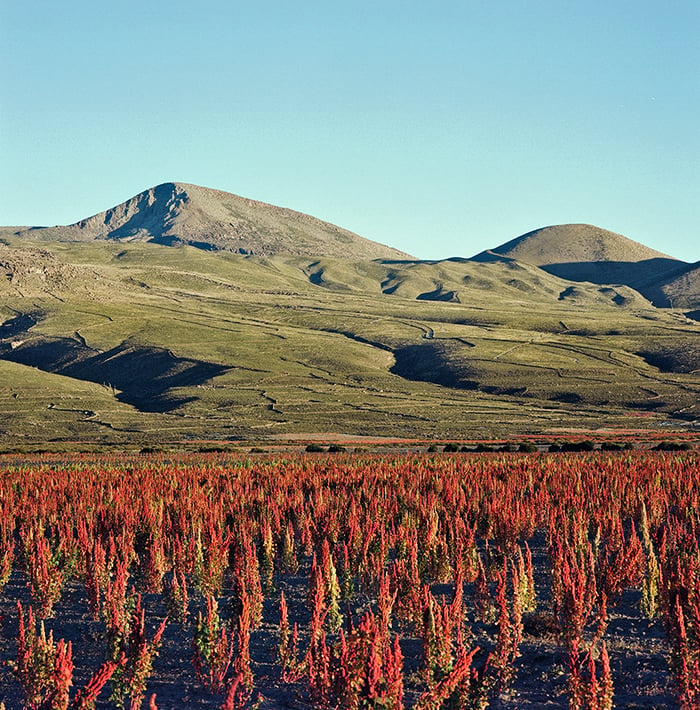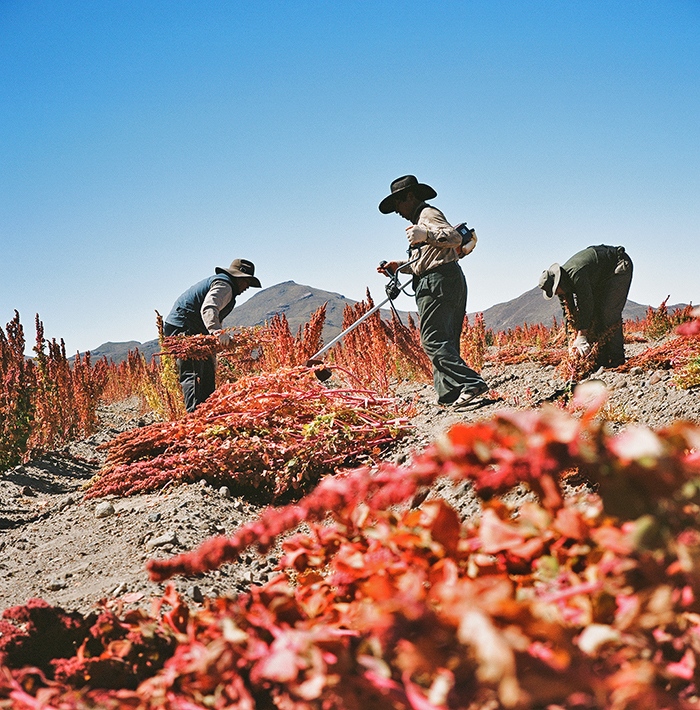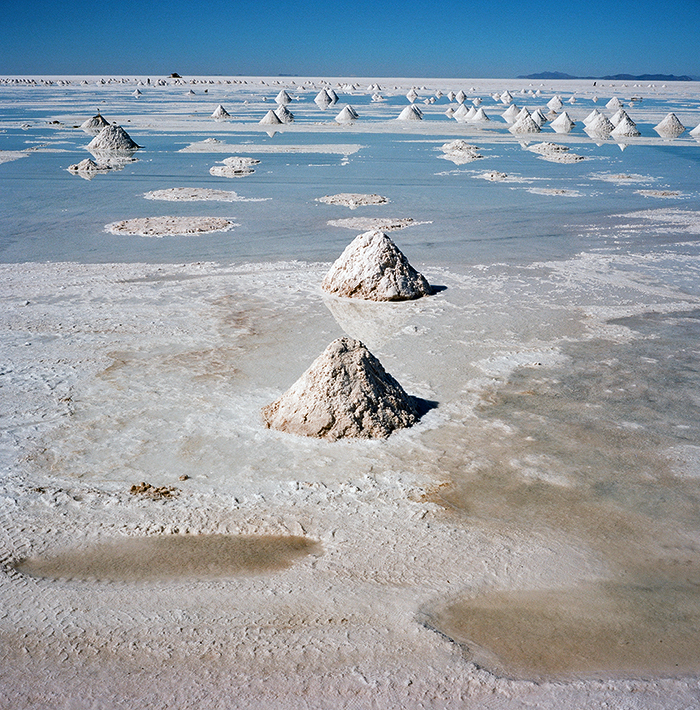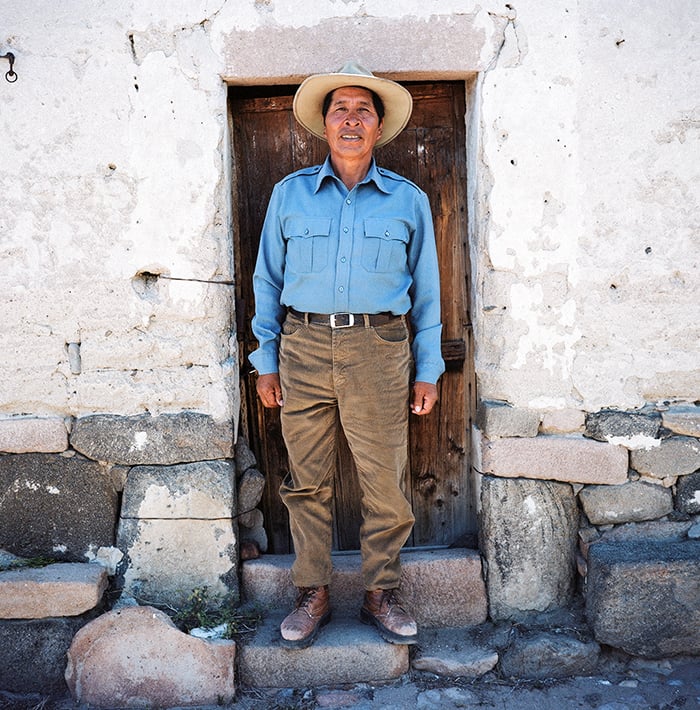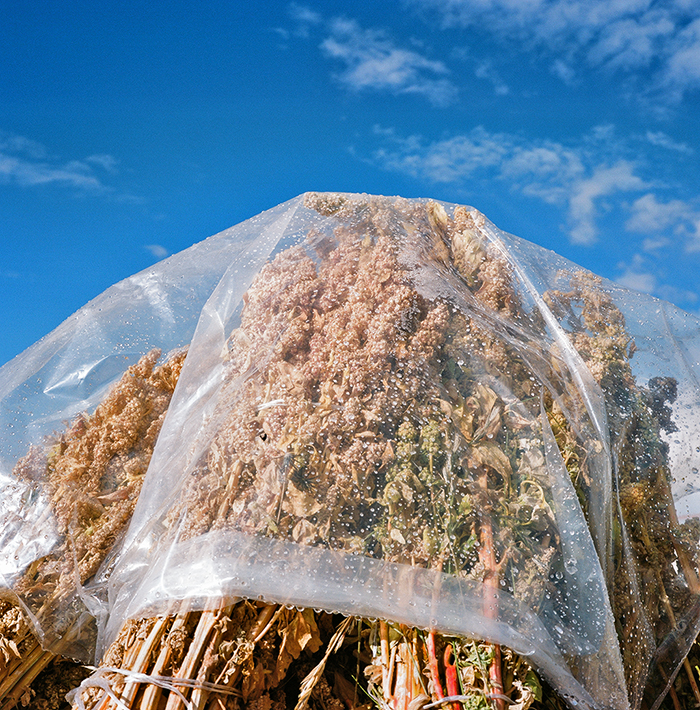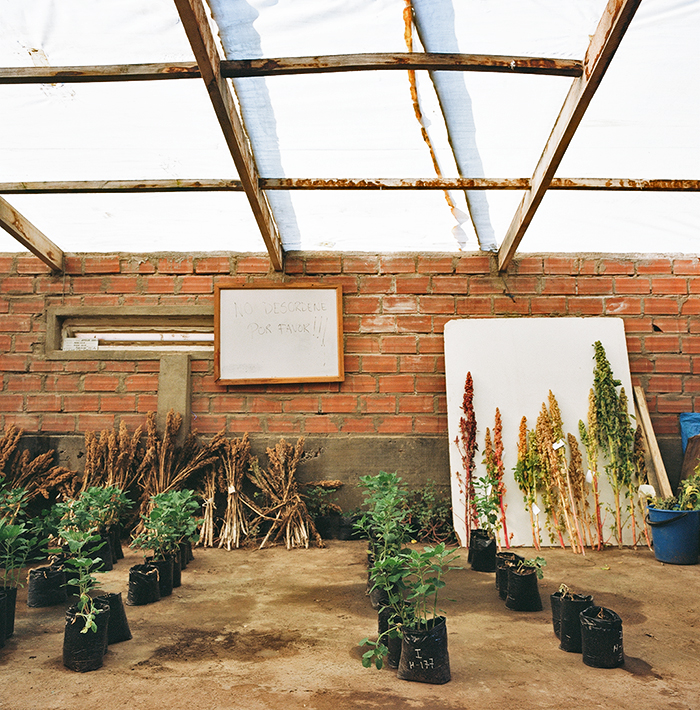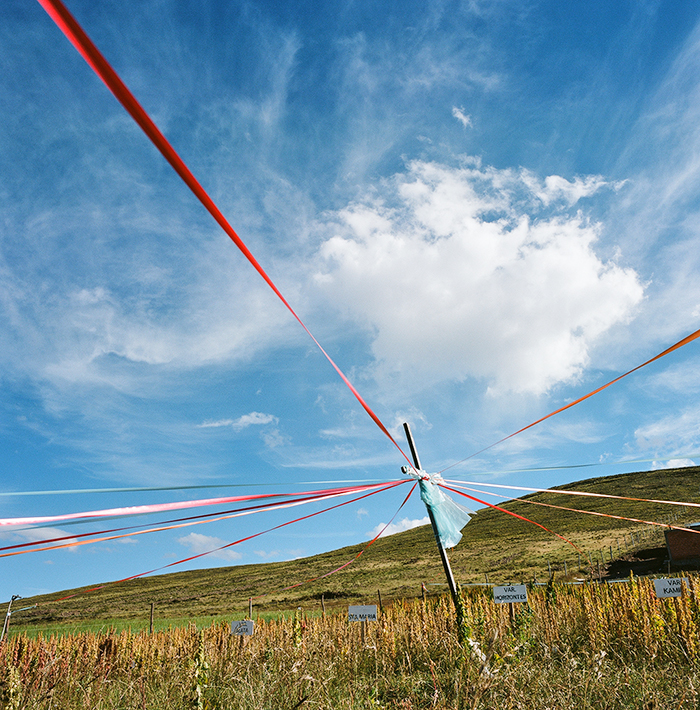Many people consider quinoa to be a vital tool for food security in the era of climate change. But in order to be grown outside its native climate, this crop must be adapted by plant breeders. The challenge is that quinoa’s seed is tightly controlled by Bolivia and other Andean nations. Working with the Food and Environment Reporting Network (FERN), writer and photographer Lisa M. Hamilton has investigated the worldwide fight over the genetic resources behind this miracle grain. “The Quinoa Quarrel,” in the May 2014 issue of Harper’s Magazine, is available on newsstands and online (subscription required). In this photo essay, Hamilton shows us the unique land from which quinoa originates.
To write “The Quinoa Quarrel,” I visited the Bolivian Altiplano, a vast, spare plateau in the Andes. With sharp mountain peaks rising on every horizon, the place has a vivid, raw beauty. But on the ground, natural wealth is sparse. At its lowest points, the Altiplano is already 11,000 feet above sea level, which means the air is thin, the sun is searing, and trees are rare. What plants do grow here have coarse leaves and hug the ground, to survive the chilling winds.
And yet, the Altiplano has supported indigenous communities for nearly twenty thousand years. These people credit their survival, in part, to quinoa. As some tell it, the story begins long ago, when drought brought hunger to the land. To help, the Aymara god Thunupa sent to earth a beautiful young emissary, who walked the length of the Altiplano. In her footsteps grew a miraculous plant that could withstand drought, cold, and even salt, and still produce a nutritious grain. It was the people’s deliverance, and to this day quinoa evokes in them both gratitude and pride. They call it el grano de oro, “the golden grain.”
One might guess that if transplanted to Iowa, this husky plant would flourish. But while at lower altitudes and with generous precipitation quinoa will often grow vigorously, it will not necessarily produce food. If the temperature gets too high, its flowers simply abort. It could be said that when Thunupa gave quinoa to the Altiplano, she was not concerned with the rest of the world. But with the global market clamoring for the immensely nutritious grain, and an increasingly food-insecure world looking for more-resilient crops, plant breeders are now trying to coax it down to the lowlands.
These photographs from my journey are a glimpse of how distant quinoa’s homeland is from the familiar farmlands where Americans and others want to grow it. But it is also a record of the connection the Altiplano’s people have to their home, and to this miraculous plant.
All photographs © Lisa M. Hamilton

